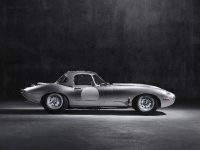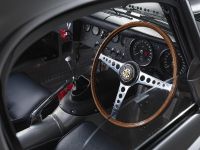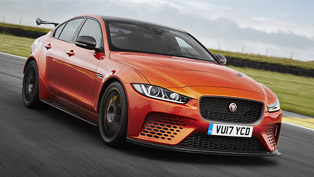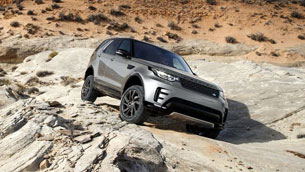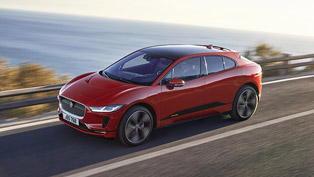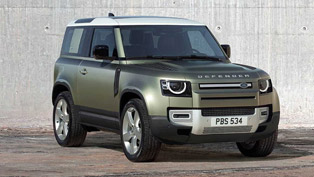Jaguar unveils continuation E-Type vehicle
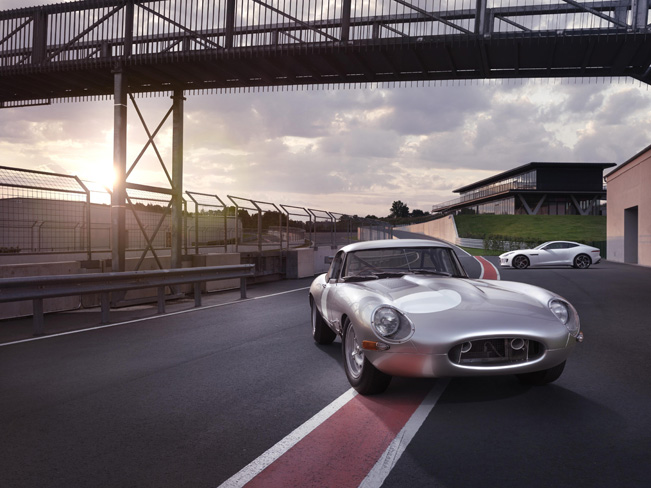
The famous car maker Jaguar has unveiled the prototype of its continuation Lightweight E—Type vehicle, six of which will be built and sold.
Jaguar announced in May 2014 that it would create six continuation Lightweight E-Type vehicles, each built by Jaguar Heritage, part of Jaguar Land Rover's new Special Operations division. Each of the six cars will be built to the specification of the last Lightweight E-Type delivered in 1964 and will be hand-crafted at a new Heritage facility located at the spiritual home of the E-Type, Browns Lane in Coventry, England. The cars will be sold as competition vehicles and all will be suitable for FIA homologation for historic motorsport purposes.
These six cars are special – they are the "missing" six vehicles from the "Special GT E-Type" project, which originally started in February 1963 with the objective of building 18 cars. Only 12 of the aluminum-bodied Lightweight E-Type vehicles were eventually built and the remaining six designated chassis numbers have lain dormant, until now. The six new cars will carry these unused Lightweight E-Type chassis numbers. A race winner in the hands of a variety of famous drivers during its competitive career, the car achieved worldwide fame, and today, original examples are highly sought after.
The upcoming Lightweight E-Type will come with an aluminum body shell that reduces the car weight by 250 lbs (114 kg) versus the production steel bodywork. Although no modern materials and build methods will be used the new vehicles will have advanced technology applied to ensure the highest quality and most faithful rendition of the Lightweight E-Type. Using advanced scanning technology, the inner and outer surfaces of a Lightweight body shell were digitally mapped. The resulting detailed scan, which recorded dimensions and shape down to a fraction of a millimeter, was assessed to validate how the body was assembled in the 1960s. This also revealed how consistent the structure was side-to-side, and how it could be engineered today to produce the highest quality results.
There are 230 individual elements in the body of the continuation Lightweight E-Type. About 75 per cent of them are made in-house at Jaguar Land Rover but some of them are delivered by external partners of the company. The aluminum used is almost the same when compared to the material used for the first cars. The aluminum body will be completed with the addition of an aluminum hood, doors and trunk lid. An aluminum hard top is standard, just like in the original.
The new Lightweight E-Type will have an engine, based on the 3,868 cc (236 cu. in.) engine, which won Le Mans in 1957 in the D-Type. A similar cylinder head is used, but in place of the D-Type's cast iron block, Jaguar introduced an aluminum block with steel liners for the Lightweight E-Type, which substantially reduced the amount of weight over the front wheels. A dry sump lubrication system reduces oil windage, maintains oil pressure during fast cornering and allows for higher oil capacity. The compression ratio is 10:1 and the car also comes with three 45 DCOE carburetors. This results in over 300 horsepower (221 kW) and 280 lb-ft (380 Nm) of torque at 4500 rpm. The power is transferred to the road via a lightweight, low inertia flywheel, a single-plate clutch, and a close-ratio, four-speed, fully-synchronized manual gearbox. The standard rear axle ratio is 3.31:1 and a variety of final drive ratios will be available. All Lightweight E-Type vehicles will be delivered with the Powr-Lok limited-slip differential.
The car will be built at the Jaguar Land Rover facility in Whitley, England where it is mated to its tubular engine sub-frame and then shipped to the JLR Gaydon facility for painting. It is then taken to Jaguar Heritage facility at Browns Lane where the car receives its' powertrain, suspension, brakes, steering, electrical items, instrument panel and soft trim. This process takes place in a dedicated work area close to where the original Lightweight E-Type vehicles were assembled. No word on pricing and availability though.
Source: Jaguar


